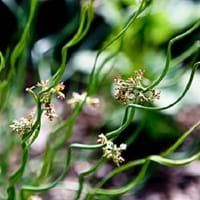Life Span
Perennial
Perennial
Origin
North America, United States, Northeastern United States, Mid-Atlantic United States, Southeastern United States, North-Central United States, South-Central United States, Texas
World/Pandemic, North America, Europe, Russia/Siberia, Africa, Asia
Types
not available
not available
Habitat
Boggy areas, Fens, Fields, meadows, Swamps, Woodlands
All sorts of environments, Banks, ditches, marshes, Shores of rivers or lakes
USDA Hardiness Zone
4-9
6-9
Sunset Zone
1a, 1b, 2a, 2b, 3a, 3b, 4, 5, 6, 7
H1, 1a, 1b, 2a, 2b, 3a, 3b, 4, 5, 6, 7, 8, 9, 10, 11, 12, 13, 14, 15, 16, 17, 18, 19, 20, 21, 22, 23, 24
Habit
Thicket/Colonizing
Clump-Forming
Flower Color
Not Available
Brown
Flower Color Modifier
Not Available
Bicolor
Fruit Color
Red
Non Fruiting Plant
Leaf Color in Spring
Not Available
Green
Leaf Color in Summer
Not Available
Green
Leaf Color in Fall
Not Available
Green
Leaf Color in Winter
Not Available
Green, Tan, Sandy Brown
Leaf Shape
Oblovate
Long hair-like leaves
Plant Season
Spring, Fall, Winter
Spring, Summer, Fall, Winter
Sunlight
Full Sun, Partial Sun
Full Sun, Partial Sun
Type of Soil
Clay, Loam
Clay, Loam, Sand
The pH of Soil
Acidic, Neutral, Alkaline
Acidic, Neutral
Soil Drainage
Average
Poorly Drained
Bloom Time
Late Spring
Early Summer, Summer, Late Summer, Early Fall
Tolerances
Not Available
Drought
Where to Plant?
Ground, Pot
Ground, Pot
How to Plant?
Divison, Seedlings
Divison, reseeds
Plant Maintenance
Medium
Medium
Watering Requirements
Keep the ground moist but not water-logged
Does not require regular watering
In Summer
Lots of watering
Lots of watering
In Spring
Moderate
Moderate
In Winter
Average Water
Average Water
Soil pH
Acidic, Neutral, Alkaline
Acidic, Neutral
Soil Type
Clay, Loam
Clay, Loam, Sand
Soil Drainage Capacity
Average
Poorly Drained
Sun Exposure
Full Sun, Partial Sun
Full Sun, Partial Sun
Pruning
Prune after flowering, Prune in early spring, Remove damaged leaves, Remove dead branches, Remove dead leaves
Prune to control growth, Remove damaged leaves, Remove dead branches, Remove dead leaves
Fertilizers
All-Purpose Liquid Fertilizer, Compost, Fertilize every year, Mulch, Nitrogen
All-Purpose Liquid Fertilizer
Pests and Diseases
Aphids, Apple Maggot, Fall Webworm, Red blotch, Scale
Free of serious pests and diseases
Plant Tolerance
Not Available
Drought
Flowers
Showy
Insignificant
Flower Petal Number
Not Available
Single
Foliage Texture
Not Available
Fine
Foliage Sheen
Not Available
Glossy
Invasive
Sometimes
Sometimes
Attracts
Birds
Bumblebees, Flying insects
Allergy
Not Available
Unknown
Aesthetic Uses
Showy Purposes
Informal Hedge, Woodland margins
Beauty Benefits
Not Available
Not Available
Environmental Uses
Air purification
Air purification
Medicinal Uses
Not Available
No Medicinal Use
Part of Plant Used
Fruits
Not Available
Other Uses
Used As Food, Used as Ornamental plant
woven into the covering of tatami mats
Used As Indoor Plant
No
No
Used As Outdoor Plant
Yes
Yes
Garden Design
Cutflower, Mixed Border, Screening, Wind Break
Bog Garden, Container, Mixed Border, Water Gardens
Botanical Name
ARONIA arbutifolia
JUNCUS effusus f.Spiral
Common Name
Red Chokeberry
Curly wurly
In Hindi
लाल Chokeberry
Corkscrew Rush
In German
Rote Apfelbeere
Corkscrew Rush
In French
Red Chokeberry
Corkscrew Rush
In Spanish
rojo Chokeberry
Corkscrew Rush
In Greek
κόκκινο Chokeberry
Corkscrew Rush
In Portuguese
Red Chokeberry
Corkscrew Rush
In Polish
Red aronii
Corkscrew Rush
In Latin
arbutifolia
Corkscrew Rush
Phylum
Magnoliophyta
Magnoliophyta
Class
Magnoliopsida
Liliopsida
Family
Rosaceae
Juncaceae
Clade
Angiosperms, Eudicots, Rosids
Angiosperms, Commelinids, Monocots
Tribe
Not Available
Not Available
Subfamily
Not Available
Not Available
Number of Species
Not Available
Not Available
Importance of Red Chokeberry and Corkscrew Rush
Want to have the most appropriate plant for your garden? You might want to know the importance of Red Chokeberry and Corkscrew Rush. Basically, these two plants vary in many aspects. Compare Red Chokeberry and Corkscrew Rush as they differ in many characteristics such as their life, care, benefits, facts, etc. Every gardener must at least have the slightest clue about the plants he wants to plant in his garden. Compare their benefits, which differ in many ways like facts and uses. The medicinal use of Red Chokeberry is Not Available whereas of Corkscrew Rush is No Medicinal Use. Red Chokeberry has beauty benefits as follows: Not Available while Corkscrew Rush has beauty benefits as follows: Not Available.
Compare Facts of Red Chokeberry vs Corkscrew Rush
How to choose the best garden plant for your garden depending upon its facts? Here garden plant comparison will help you to solve this query. Compare the facts of Red Chokeberry vs Corkscrew Rush and know which one to choose. As garden plants have benefits and other uses, allergy is also a major drawback of plants for some people. Allergic reactions of Red Chokeberry are Not Available whereas of Corkscrew Rush have Unknown respectively. Having a fruit bearing plant in your garden can be a plus point of your garden. Red Chokeberry has showy fruits and Corkscrew Rush has no showy fruits. Also Red Chokeberry is not flowering and Corkscrew Rush is not flowering . You can compare Red Chokeberry and Corkscrew Rush facts and facts of other plants too.





